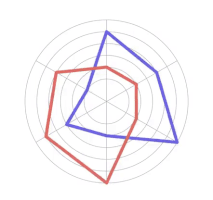Indian architecture, with its rich tapestry of history and cultural influences, is celebrated for its intricate and symbolic decorative elements. These traditional Indian architecture elements are more than mere embellishments; they carry deep cultural, spiritual, and historical significance. Understanding these elements provides a window into the rich heritage of India's architectural legacy and the profound meanings they convey.
Introduction to Traditional Indian Architecture Elements
The essence of traditional Indian architecture lies in its meticulous attention to detail and the integration of symbolic elements. Across the diverse regions of India, unique architectural styles have emerged, each with distinctive features, yet certain core elements are universally recognized and revered.
Temple Architecture: A Spiritual and Symbolic Hub
Temples stand as the crowning jewels of traditional Indian architecture. Designed as microcosms of the cosmos, these structures serve as bridges connecting the human realm with the divine. The towering Shikhara, a spire representing Mount Meru (the mythological axis of the universe), points skyward, while expansive Mandapas (pillared halls) provide communal gathering spaces for rituals and ceremonies.
Modhera Sun Temple_©gujarattourism.com
Key Elements of Indian Architecture: Pillars, Domes, and Arches
Pillars: Often intricately carved, pillars are both structural and symbolic, representing stability and strength. They are adorned with motifs of flora, fauna, and mythological scenes, showcasing the artisans' craftsmanship.
Domes: Introduced during the Mughal era, domes symbolize the heavens and are prominent in mosques and mausoleums, such as the Taj Mahal. Their majestic presence adds to the spiritual ambiance of these structures.
Arches: Arches, particularly prominent in Mughal architecture, symbolize gateways to different realms. They are often embellished with detailed patterns and calligraphy, adding to the aesthetic and symbolic value.
Architectural Symbols: Decoding the Decorative Elements
Indian architecture transcends mere bricks and mortar. It's a language, a visual narrative steeped in symbolism that speaks volumes about the culture and beliefs of the society that birthed it. Embedded within the intricate carvings, sculptures, and motifs are profound meanings waiting to be deciphered. Let's delve deeper into some of these architectural symbols and unlock the stories they tell.
The Lotus: A Bloom of Purity and Enlightenment
The lotus flower is perhaps the most ubiquitous symbol in Indian architecture. This sacred bloom, emerging pristine from muddy waters, represents the human spirit's ability to rise above the challenges of life and attain enlightenment. Its perfect symmetry and unblemished petals embody purity, both physical and spiritual. In temples, the lotus is often depicted on floors or in friezes, symbolizing the stepping stones on the path to spiritual awakening. Even in modern architecture, the lotus motif continues to appear, a testament to its timeless significance.
Lotus temple_©inditales.com
The Elephant: A Guardian of Strength and Good Fortune
The majestic elephant is a revered symbol in Indian culture, and its presence in architecture signifies strength, wisdom, and auspiciousness. Sculptures of elephants, particularly at entrances of traditional buildings, serve as guardians, warding off evil and ensuring the well-being of those within. Their immense size and intelligence represent power and knowledge, while their gentle nature embodies compassion and stability. In some regions, elephants are depicted carrying pots of overflowing water, symbolizing prosperity and abundance.
Hoysala architecture_©pinterest.com
Decorative Elements: Showcasing Craftsmanship
The decorative elements in Indian architecture highlight the exceptional skills of Indian artisans. From intricate jali (lattice) work to vibrant frescoes, these elements enhance the visual and spiritual appeal of the structures.
Jali Work: Perforated Beauty
Jali work, featuring perforated stone or latticed screens, serves both aesthetic and functional purposes. It allows light and air to flow while providing privacy and reducing heat, creating a tranquil indoor environment.
Frescoes and Murals: Colorful Narratives
Frescoes and murals adorn the walls of palaces and temples, depicting scenes from mythology, history, and daily life. These colorful paintings are not only decorative but also serve as mediums for storytelling and cultural preservation.
Regional Variations in Indian Architectural Elements
While certain elements are common across India, regional variations add to the richness of Indian architecture. Each region incorporates local materials and techniques, reflecting the diversity of the Indian subcontinent.
North Indian Architecture: Grandeur and Detail
In Northern India, the architecture is known for its grandeur and intricate detailing. The use of red sandstone and marble, as seen in the Mughal monuments, adds to the splendor. The embellishments often include floral patterns, calligraphy, and geometric designs.
Rani ki vaav_©thebetterindia.com
South Indian Architecture: Temples and Towers
South Indian architecture is characterized by its towering temple complexes with elaborate gopurams (gateway towers). These structures are adorned with intricate carvings depicting deities, animals, and mythological stories, showcasing the region’s rich cultural heritage.
Rameswaram _©orangewayfarer.com
Modern Adaptations of Traditional Elements
In contemporary times, traditional Indian architectural elements are being adapted in modern designs. Architects incorporate these elements to add cultural depth and aesthetic appeal to new constructions.
Incorporating Traditional Elements in Modern Homes
Modern homes often feature traditional elements such as jali work, lotus motifs, and carved wooden doors. These additions not only enhance the beauty of the homes but also imbue them with cultural significance.
Symbolism in Commercial Spaces
Commercial spaces, including hotels and office buildings, incorporate traditional Indian decorative elements to create a unique ambiance. The use of symbols like the lotus and elephant adds a touch of Indian heritage, making these spaces culturally rich and inviting.
Conclusion
The ornamental elements of Indian architecture are a testament to the country’s rich cultural and spiritual heritage. From the symbolic lotus to the intricate jali work, each element tells a story and carries profound meanings. By understanding these traditional Indian architecture elements, we can appreciate the depth and beauty of India’s architectural legacy. The fusion of aesthetics and symbolism in these designs continues to inspire and influence modern architecture, reflecting the timeless appeal of Indian art and culture.
The future of architecture is bright, but are your skills keeping pace? Kaarwan's architecture-specific courses provide you with the knowledge and tools to confidently navigate the AEC industry. Gain valuable insights, master in-demand software, and stand out with designs that impress!
